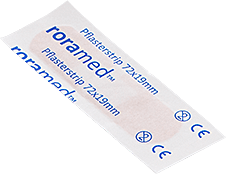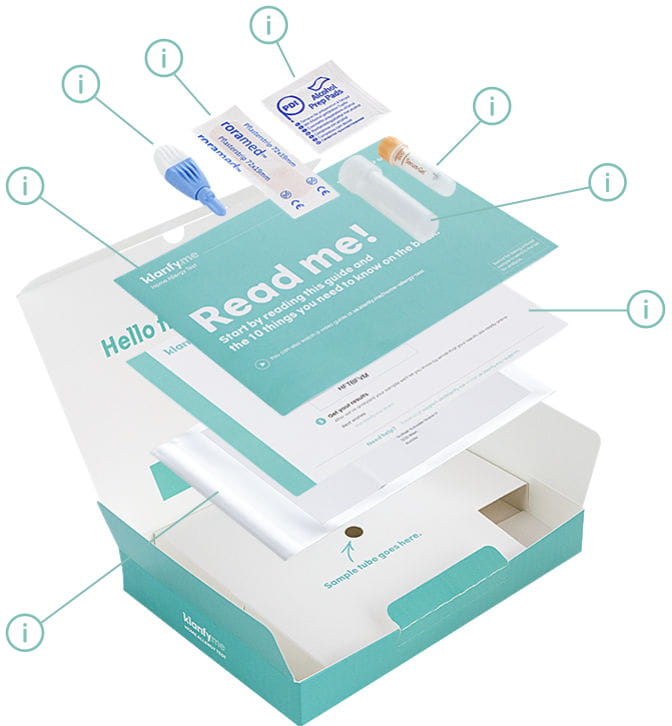Legume and nut allergy test
An allergy to legumes such as peanut allergy and tree nut allergy are both common types of allergies in children and adults. If you're experiencing symptoms of food allergy and you're concerned that it might be a nut allergy or a reaction to legumes you may be considering a legume and nut allergy test. In this article, we're going to answer some of the questions you may have about testing for allergies, and in particular legume allergy and nut allergy.
Legumes are a type of food that includes peas, beans, lentils and peanuts. Tree nuts include almonds, brazil nuts, cashews, hazel nuts, macadamia, pecan, pistachios and walnuts. People can be allergic to one type of legume or nut or several different types. There are also crossovers between the types. This is called cross reactions. If for example, you have a peanut allergy you may have an increased chance of developing a tree nut allergy. That’s because similar proteins are found in both types of nuts. If you have an existing tree nut allergy it doesn’t necessarily mean you are also allergic to peanuts, although it’s not uncommon to be allergic to both.
We’ve made testing for food allergies simple. Discover what your body reacts to with our home to lab blood test. The Home Allergy Test can be a first step to finding out if food allergies, including peanut allergy or tree nut allergy, might be causing your allergic reactions. You don't have to wait for an appointment as you can start the process of testing for allergies from the comfort of your own home.
Order your Home Allergy Test today and take a first step to finding out if you have a nut allergy.
About the legume and nut allergy test
If you want a comprehensive view of your potential allergy triggers you can test 294 different allergens including 154 different food allergens with the Home Allergy Test. The Home Allergy Test is a home-to-lab blood test, which measures the number of allergic antibodies in your blood and can pinpoint potential triggers.
Allergic antibodies are called Immunoglobulin E (IgE) antibodies. IgE is an important piece of the puzzle when it comes to food allergy and other allergies. It plays a vital role in allergic reactions to many different substances including legume, nut and other food allergens.
The Home Allergy Test analyses your body's reaction to many different allergen extracts and components. Allergen extracts are taken from what's called a whole allergen source. For example, a nut. Allergen components are individual proteins in the allergen source. For example, the proteins of the nut that may cause a reaction.
The Home Allergy Test comes with everything you need to collect a small blood sample from your fingertip as well as instructions on how to do it. There's also a how-to video guide you can watch. A pre-paid envelope is included in the test kit to make it easy for you to send your blood sample to our partner lab for analysis.
You also need to activate your legume and nut allergy test online. This is really important. The test kit includes your unique code and instructions to activate your test. Activating your test creates a secure, online account if you don't already have one with us. If you don't activate your nut allergy test using the unique code, we don't know who the blood sample belongs to. We can't process your test unless it's activated.
Within two weeks of posting your blood sample, we'll let you know by email that the blood test and analysis are complete and your comprehensive results are ready for you in your online account.
The Home Allergy Test is suitable for anyone over the age of 12 years. For children under the age of 12, a doctor needs to perform an allergy blood test. Children and adolescents between 12 and 18 must be supervised by an adult to use the Home Allergy Test.
Many allergens, one test
The Home Allergy Test tests and analyses your body’s reaction to 294 different allergens including:- Pollen 59
- Pets 25
- Insect stings 10
- Moulds & yeasts 13
- Foods 154
- Other 14
Symptoms of legume and nut allergy
An allergic reaction from a food allergy usually occurs within minutes of being in contact with the particular food. But it can also take up to two hours for symptoms to appear. Legumes and nut allergy symptoms can range from mild to moderate to severe. You may experience your legume or nut allergy symptoms differently from other people with legume and nut allergy.
Allergic reactions to nuts don’t necessarily become more severe each time they happen. Allergic reactions are unpredictable and there is no reliable way of knowing how you might react the next time you come into contact with a nut or legume. This makes it even more important to know how to recognise the signs and symptoms of legume and nut allergy so you can always be prepared.
Symptoms may affect different parts of your body at the same time. They can occur when you come into contact with even a small amount of a nut.
Common legume and nut allergy symptoms
- Tingling or itching in the mouth
- A raised, itchy red rash (hives) – sometimes the skin can turn red and itchy without a raised rash
- Swelling of the face, mouth, throat or other parts of the body
- Difficulty swallowing
- Wheezing or shortness of breath
- Feeling dizzy and lightheaded
- Feeling sick (nausea) or vomiting
- Abdominal pain or diarrhoea
- Hay fever-like symptoms such as sneezing or itchy eyes
Anaphylaxis
In some people, a nut allergy can cause an acute, severe allergic reaction called anaphylaxis. It can affect your breathing and send your body into shock. Without prompt medical attention, anaphylaxis can be life-threatening.
The symptoms of anaphylaxis can appear suddenly and quickly get worse. It can start with the symptoms listed above but can lead to:
- Swollen tongue
- Breathing difficulties
- Tight chest
- Trouble swallowing or speaking
- Feeling dizzy or fainth
- Collapse
Anaphylaxis always requires an emergency medical response. It can be very serious if not treated right away. Call 999 for an ambulance immediately if you or somebody you’re with experiences any of these symptoms.
All you need is in the box
Prepaid return envelope
Use this to send your sample to the lab
Welcome card
Includes your unique activation code and instructions how to use it
Step-by-step guide
Start by reading this guide and the 10 things you need to know on the back
Lancing device
Sterile device to prick your fingertip to obtain a small blood sample
Plaster
To put on your fingertip after collecting the blood sample
Alcohol wipes
Use to sanitise your finger
Transport tube
Filled sample tube goes into the transport tube. Both tubes are then sealed into the prepaid return envelope for posting to the lab
Sample tube
Tube to collect about 6 drops of blood










Why you should get tested for legume and nut allergy
It can be challenging to know what’s the best treatment for your allergy symptoms if you’re not sure what’s causing them. If you suspect you might have food allergies, including legume allergy, peanut allergy or tree nut allergy, but haven’t yet had a diagnosis from a doctor, allergy testing with the Home Allergy Test can be a first step to finding out what might be triggering your symptoms.
Allergy testing that detects specific IgE antibodies in your blood can show if you’re sensitised to a range of food allergens including different legume and nut allergens.
The results of any allergy test need to be interpreted by a doctor. Diagnosis of nut allergy or legume allergy takes consideration of your symptoms and your medical history along with the results of any test for allergy. Your medical history is the fundamental link between your allergy test results and being diagnosed with allergies.
An accurate diagnosis means your doctor will be able to draw up a suitable treatment plan for your peanut allergy, tree nut allergy, food allergy and any other allergies. Having the right information from your allergies test can help you understand and better manage your symptoms.
Being sensitised to legume or nut allergens doesn’t mean you necessarily have a legume allergy, peanut allergy or a tree nut allergy though. You should view the results of an allergy blood test as an indication of a suspected allergy rather than clear-cut proof. Results of allergy testing for sensitisation can be a first step to finding out if you have nut allergies or legume allergies.
Don't take any decisions or actions to change your medication or diet based on the results of a test for allergies without consulting your doctor first.
Nut allergy: a closer look
A tree nut grows on a tree, just as the name suggests. There are eight nuts in the tree nut family, including:- Almonds
- Brazil nuts
- Cashews
- Hazel nuts
- Macadamia
- Pecan
- Pistachios
- Walnuts
- Shea nuts
Nut allergies typically develop before the age of 5 years old. But it is possible for legume and nut allergies to develop at any age. Nut allergy can develop even when nuts have been eaten before without any symptoms of allergy.
Legume allergy: it’s not only peanuts
Let’s start with the difference between a peanut and a tree nut:
Peanut is a type of groundnut, they grow underground. Peanuts are from the legume family, so they’re related to peas, beans, chickpeas and lentils. It’s rare for people with peanut allergy to have an allergic reaction to other legumes.
Food allergies, including legume and nut allergies, can cause uncomfortable and unpleasant symptoms, from digestive problems to skin reactions. In some people, a legume, peanut or tree nut allergy can cause severe symptoms and even be life-threatening.
All allergies, including legume and nut allergy, start with your immune system. Our immune system is there to protect us from infectious bacteria, viruses, fungi and parasites. But if you have a nut allergy, your immune system goes into overdrive. Your immune system mistakenly identifies proteins in the nut as a threat and your body takes defensive action to try and get rid of them as quickly as possible.
What happens in an allergic reaction?
In an allergic reaction, your immune system produces antibodies called Immunoglobulin E (IgE) specific to the allergen it sees as the threat. In the case of a nut allergy, the threat can be the proteins in the nut. The IgE antibodies signal to other cells to release certain chemicals, including histamine. Histamine is part of an inflammatory response. White blood cells and various fluids surge to the site where the nut allergen has come into contact with your body.
The plan is to get rid of the allergen as quickly as possible. The inflammatory response causes swelling and other typical symptoms of an allergic reaction. Histamine and some other chemicals send signals to your body to produce more mucus to try to flush the allergen away. And it may cause itching as well, to encourage you to try to scratch the allergen off your skin.
How do allergies develop?
There’s a process of how allergies develop. The process is called sensitisation. You probably wouldn’t have an allergic reaction to nuts the first time you come into contact with them. First of all, your immune system preps its defence mechanism and registers the protein in the nut as an allergen. Next, your immune system memorises the structure of the nut protein so it can produce specific IgE antibodies.
When you have specific IgE antibodies in your blood, you’re sensitised to a particular allergen. Once you’re sensitised to it your body will produce IgE antibodies every time you encounter that allergen again. But being sensitised doesn’t necessarily mean you’re allergic.
If you’re allergic to nuts, the next time you come into contact with a nut, or food or other products that contain nut the custom-built IgE antibodies will recognise the allergen. And it might trigger an allergic reaction. But you can be sensitised and encounter nuts repeatedly and never experience an allergic reaction. It’s not yet fully understood why an allergic reaction is triggered in some sensitised people and not in others. But as long as there are no symptoms, you’re not allergic. So, sensitisation does not always lead to symptoms, but symptoms do not develop without sensitisation.
A family history of allergy
We don’t know yet why some people stop at sensitisation and others go on to develop allergies. We do know that you’re more likely to develop an allergy if other members of your family have allergies. It’s not that you inherit allergies, it means that you may inherit the tendency towards having allergies. But this isn’t a hard and fast rule. Some people have allergies when no-one else in their family does.
Start your journey here
Take a first step to finding out if legume or nut allergy might be causing your symptoms. Order your Home Allergy Test today.
Others say
"Very clear instructions and the packaging is high quality. Looking forward to receiving the results." - Sara P
"I got the results and I have to say, I am very impressed.
I have only ever noticed suffering from sensitivity to cats, dust and a bit on grass before moving house at the end of Feb and I’ve always been able to control these reactions with off the shelf antihistamine, the test confirmed sensitivity to all of these.
Since moving I have suffered badly from a far more severe reaction to something unknown, I had assumed it was pollen from the symptoms as I am now surrounded by trees and flowering plants and there is a park behind the house, so plenty of grass too. My hope when taking the test was to find out if this new issue was a general sensitivity or if there was something specific in my new environment which was causing it. I am delighted that the test came back with such a strong positive on Ash tree pollen along with a moderate on Olive (which as I’m reading are in some way connected) while showing no sensitivity to other tree pollen types at all.
Having checked the pollen season for Ash trees it seems to coincide really well with when I had my symptoms, I.e. through March and April I was really bad but its clearing up now in May to the point that its negligible now. Looking around outside I think I’ve spotted the culprit at the back of my garden right next to where I’ve been sitting when outside!
I was sceptical about spending the money on this but at the time my symptoms were so harsh I think I’d have tried almost anything! I’m so glad that I did this now." - Rob S.
"Great product! For a while now, I have suspected that my son might have an allergy. I was leaning towards tree or grass pollen, but he didn’t really seem to be consistently bothered when being outside. I bought the home allergy test to understand what he was sensitised to. The guide that comes with the product, made it a simple exercise to complete the test. Drawing the blood took about 20 seconds, and there is really little hassle at all.
The report came back within a couple of weeks and showed high sensitisation to house dust mite. Didn’t think of that beforehand. So now we know where to focus and we have had dialogue with our doctor for next steps and proper treatment." - Morten S.

